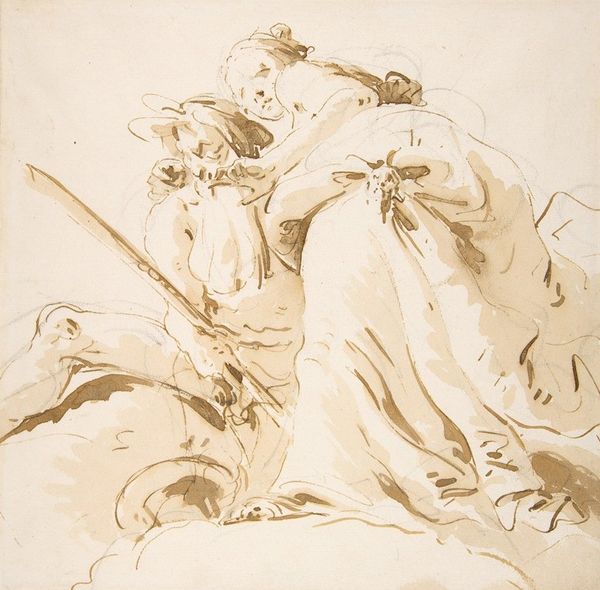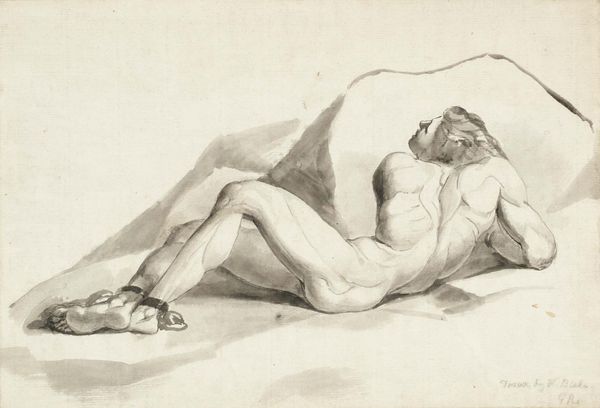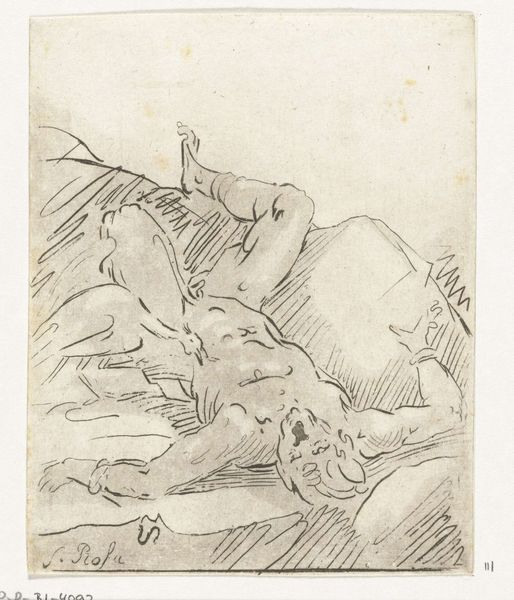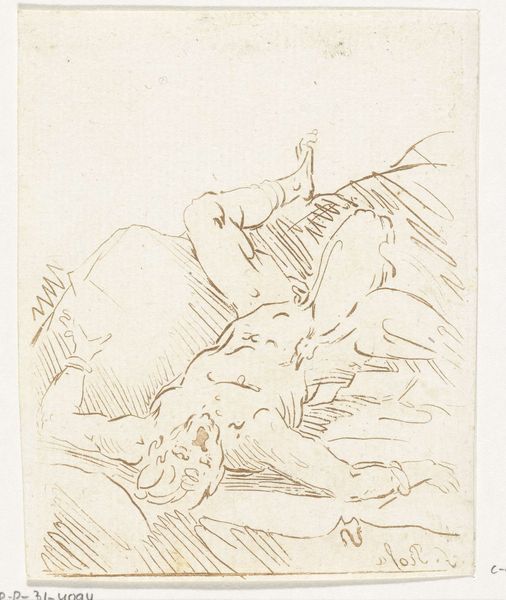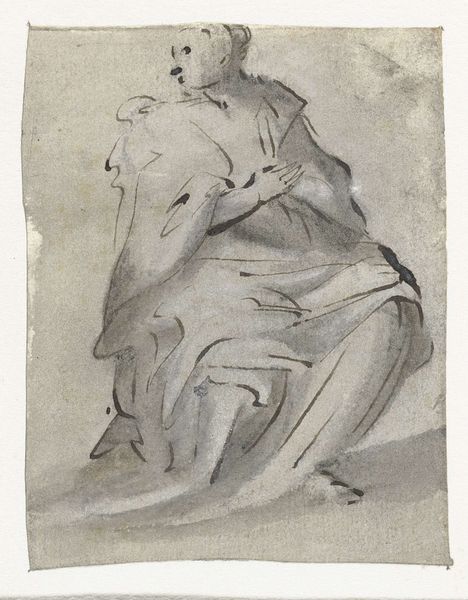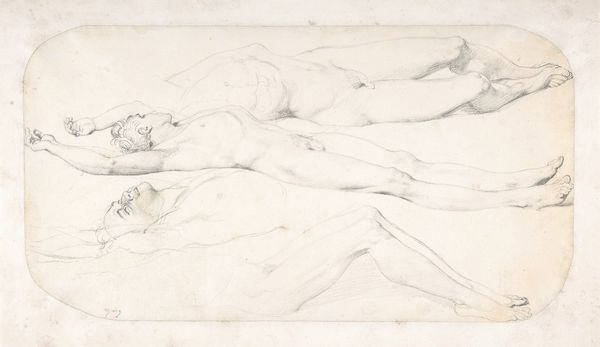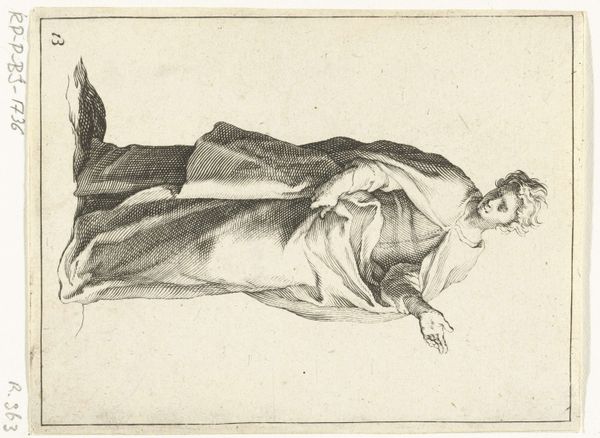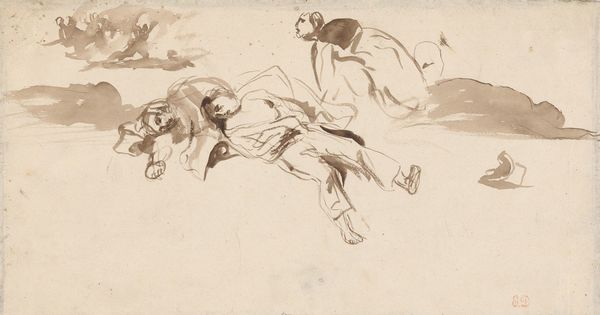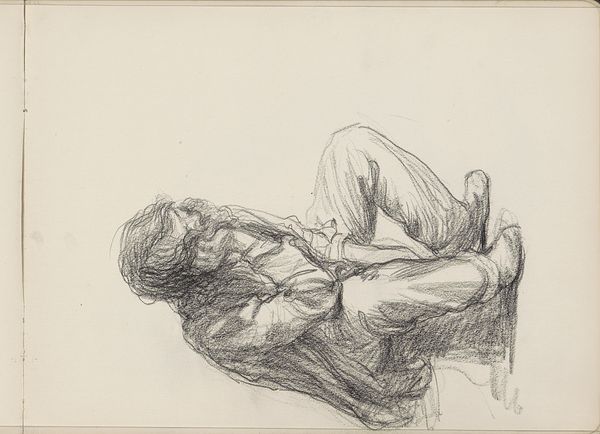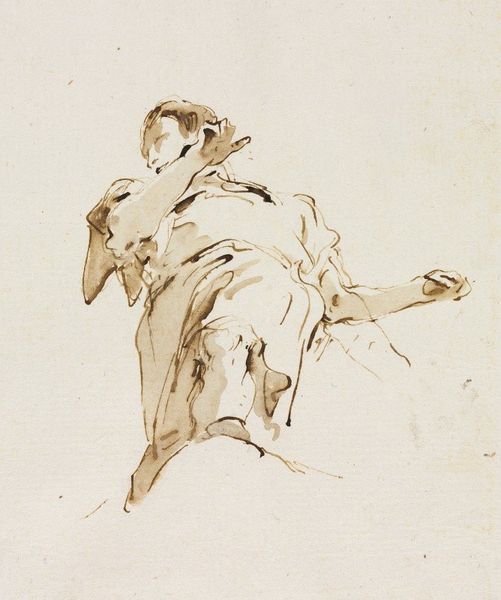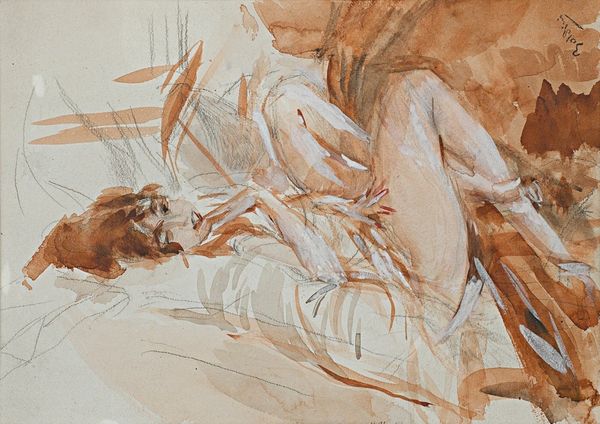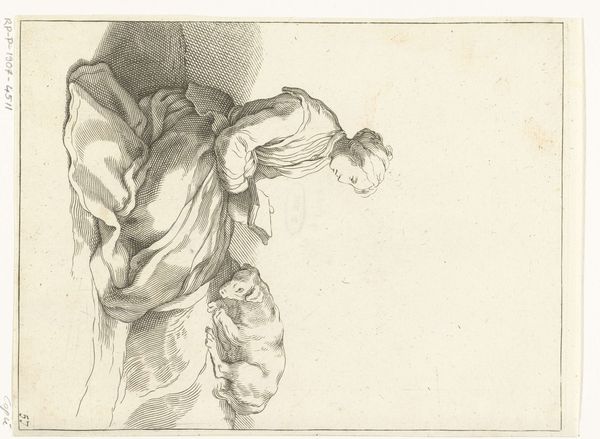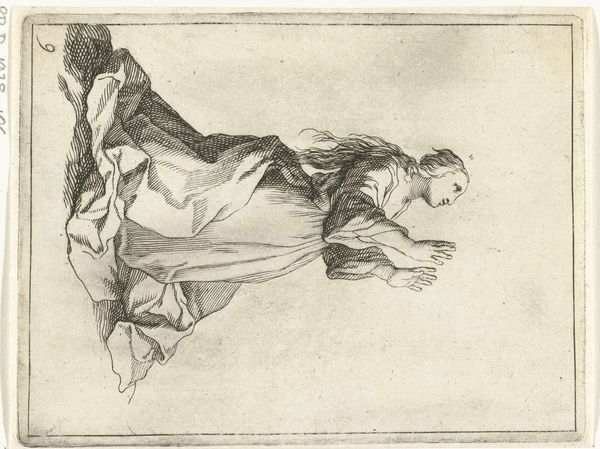
drawing, ink, pen
#
drawing
#
baroque
#
figuration
#
ink
#
pen
#
portrait drawing
#
nude
Copyright: Public Domain: Artvee
Editor: This is Giovanni Battista Tiepolo's "Reclining male figure seen from below," a pen and ink drawing from around 1740-1750. The pose is so dynamic, almost defiant. How do you interpret this work? Curator: Tiepolo's figure, rendered in such a bold and foreshortened perspective, invites us to consider power dynamics. In the 18th century, academic figure drawing served specific ideological purposes. Can we view this reclining nude as a challenge to the classical, often idealized, male form which upheld notions of masculine authority? Editor: That's a really interesting perspective! I was just focused on the technique. The foreshortening is so impressive. Curator: Absolutely, and the virtuosity is part of the performance! But what does it mean to display this mastery, particularly in representing the male body? Consider how the gaze functions. Does the figure invite or defy our scrutiny? How might ideas about class and privilege play into Tiepolo’s artistic choices? Editor: So, it's not just a study of anatomy, but a statement about... about something more? It's like the artist is pushing against the constraints of academic art itself. Curator: Exactly! It’s a product of its time, deeply entangled with social and intellectual currents. Can we also consider queer readings, noting the male gaze inherent in its creation, alongside contemporary conversations around nudity and representation? Editor: I never would have considered it that way! I was really stuck on the technical skill of the drawing. Curator: These technical choices always intertwine with meaning, shaped by the historical context in which Tiepolo was creating, viewing, and being viewed. Editor: Thanks, that was great! I will never look at Baroque drawing the same way.
Comments
No comments
Be the first to comment and join the conversation on the ultimate creative platform.

